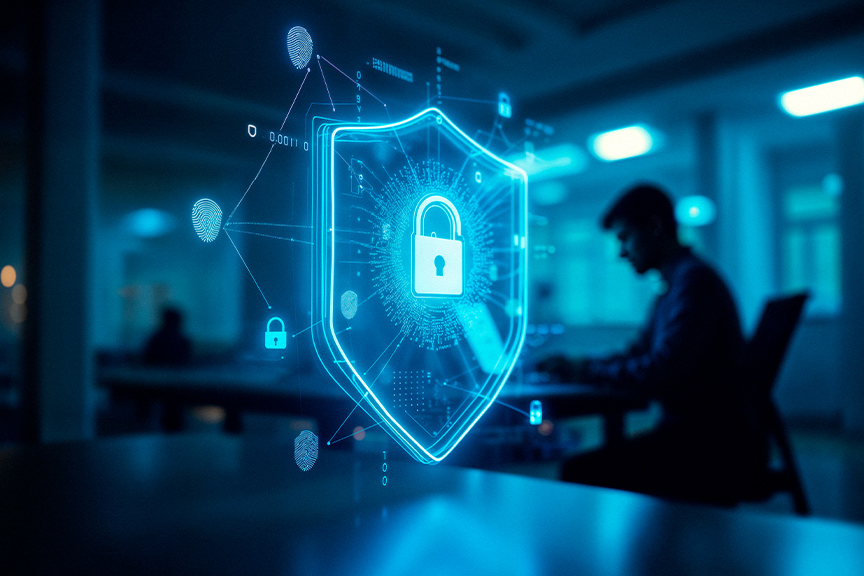Is Your Old SharePoint a Security Risk? How to Protect Your Data Now

Let’s talk about the digital equivalent of leaving your front door unlocked with a neon “Welcome!” sign for burglars. That’s essentially what’s happening right now with older versions of Microsoft SharePoint that many businesses still rely on.
You might have seen the headlines: “Microsoft Put Older Versions of SharePoint on Life Support.” It sounds like tech jargon, but the translation for you and your business is simple: increased, severe, and unacceptable risk.
If your organization uses SharePoint 2013 or even older versions, it’s critical to understand what this means for your security, your data, and your bottom line.
What “Life Support” Really Means
When Microsoft puts a product on “End of Life” or “Life Support,” it’s not just about no longer adding new features. It’s a fundamental shift in their responsibility—and yours.
Think of it like maintaining a car. For a supported model, the manufacturer (Microsoft) provides regular recalls, safety patches for newly discovered flaws, and a dedicated team of mechanics. Once the model is discontinued, they stop making those parts. If a critical flaw is found in the brakes tomorrow, you’re on your own.
That’s exactly what’s happening with SharePoint 2013 (which reached End of Life in April 2023) and will happen with SharePoint 2016 and 2019 in the coming years. Microsoft is no longer providing:
Security Updates: The most critical part. No more patches for newly discovered vulnerabilities.
Technical Support: If something breaks or a major issue arises, you can’t call Microsoft for a fix.
Bug Fixes: General reliability and performance issues will remain forever.
Why Hackers Are Throwing a Party
Cybercriminals aren’t just opportunistic; they’re strategic. They read Microsoft’s announcements too. They know that every day after the End of Life date, the attack surface for these old SharePoint versions becomes more attractive. Here’s why:
The Blueprint is Public: Security researchers and Microsoft itself have publicly documented the vulnerabilities in older software. Hackers use this information to build exploits, knowing these holes will never be patched on old systems.
Easy Targets: Why spend time and resources trying to break into a modern, fortified system with active defenses when there’s a weak, unguarded door right next to it? Unsupported software is that weak door.
Access to Treasure: SharePoint isn’t just any server. It’s often the central hub for your company’s most sensitive data—financial reports, HR documents, intellectual property, and client information. A successful breach can be catastrophic.
This Isn’t a Theoretical Risk. It’s Happening Now
Businesses running outdated SharePoint versions are already experiencing attacks. Hackers are deploying malware, ransomware (which encrypts your data until you pay a fee), and using compromised servers as a backdoor to move laterally through entire networks. The cost of a breach—in downtime, ransom payments, data loss, and reputational damage—dwarfs the cost of upgrading.
Your Path to Safety: It’s Time to Modernize
This isn’t meant to scare you; it’s meant to empower you to take action. Protecting your business is entirely achievable. You have a few clear paths:
Upgrade to a Modern SharePoint: Migrating to SharePoint Subscription Edition (the latest version) or Microsoft 365 (which includes SharePoint Online) is the most secure and feature-rich option. You move from being solely responsible for security to a shared responsibility model with Microsoft, who handles the infrastructure and security updates.
Consider Extended Security Updates (ESU): For some versions, Microsoft offers paid Extended Security Updates. This is a temporary stopgap, not a solution. It’s expensive and only buys you time to plan a proper migration. Think of it as paying a premium for those discontinued car parts.
Assess Your Current Risk (Immediate Action): If you’re unsure what version you’re running or how exposed you are, your first step is to find out. Talk to your IT team or partner and ask them directly: “Is our SharePoint instance still receiving security updates?”
Your Next Step is Simple
You don’t have to navigate this alone. The most important thing is to start the conversation.
If you have an IT team: Forward them this article and ask for a review of your SharePoint environment and a migration plan.
If you need expert guidance: This is what we specialize in. We help businesses like yours securely migrate from outdated, risky systems to modern, secure, and powerful platforms.
SOD Infotech is here to help. Contact us today for a free, no-obligation security assessment of your SharePoint environment. Let’s make sure your data is safe, together.
Author
With 17+ years of visionary leadership in the IT industry, Ragesh Unnikrishnan has pioneered scalable technology solutions that empower businesses across global markets.
